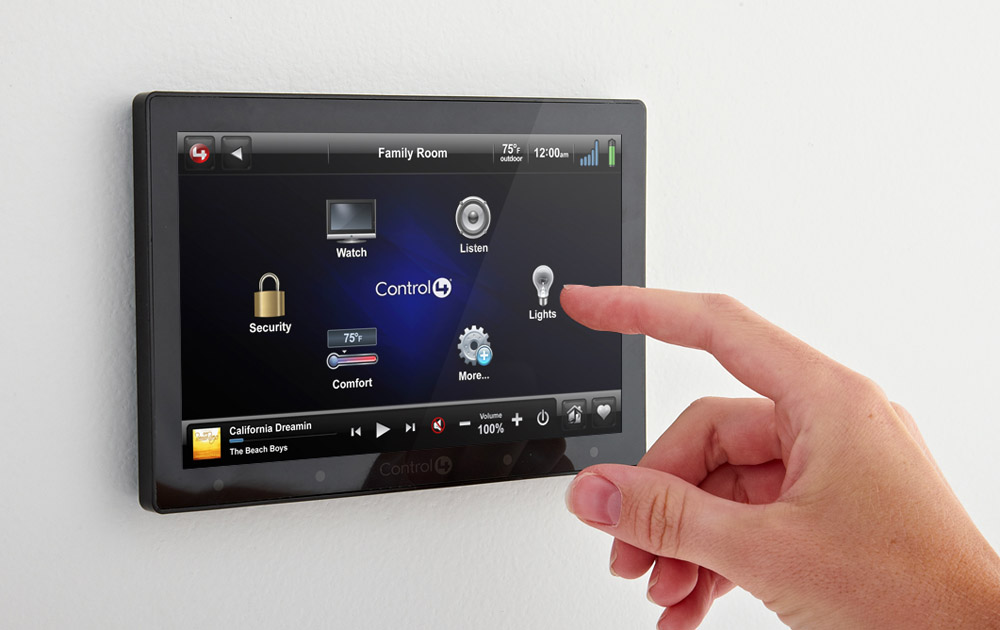Home Automation Technology - Speaking Geek
November 1, 2012
In the world of automation, we like to say that the purpose of automation is to get all of your devices "talking" to each other. What a novel idea! On the surface that's exactly what happens. However, the technology that allows this magic to happen is obviously a bit more in depth than that. Here is a brief list of terms and definitions that may help you "speak geek" as you start to learn more about automation technology.

Wired Protocols:

Wired Protocols:
- Ethernet: This is a network protocol, but the most commonly used application is quite simply, a network cable. It is a pretty well known term, but it is a twisted pair cable (it has 4 pairs of cables that are twisted together) and delivers your network from point A to point B. There are two popular types of Ethernet cable that are in use today:
- Category 5e (Cat 5): This is, by far, is the most popular Ethernet cable in use today. Most homes and businesses have Cat 5 cables running to every room or work station in the structure. This standard provides performance of up to 100 MHz. Bonus - Cat 5 cable can also be used to carry other signals such as telephone and video.
- Category 6 (Cat 6): This cable standard is almost identical to Cat 5 cable in every way except for one, it's much faster. This standard provides performance of up to 250 MHz, so it is up to 2.5 times faster than Cat 5. It is also backward-compatible with Cat 5 cable so you may integrate Cat 6 cable into a network that already has Cat 5 cable. The speed of your network, however, will always default to the lowest common denominator - in this case being the 100 MHz of the Cat 5.
- Wi-Fi: Perhaps the most popular technology, Wi-Fi allows an electronic device (computer, TV, smart phone, etc.) to access a computer network, thus giving those devices the capability to talk to each other as long as they are all hooked up to the same network. Wi-Fi also gives these devices access to the Internet.
- Infrared (IR): This is the most commonly used technology that allows you to change the channel on your TV without ever having to leave the comfort of your couch. When a button is pressed on the remote, it sends out a pulse of infrared light that is then received and translated by the TV and -- Voila! -- the channel magically changes. The one, BIG downside to infrared is that it is a line-of-sight technology, meaning that you have to be able to point the remote directly at the TV without anything else getting in the way.
- Radio Frequency (RF): This is where it starts to get interesting. By sending a command through a radio wave, RF is able to eliminate the major problem that is presented with infrared by eliminating the line-of-sight requirement. Most automation technologies are based on the RF standard because this allows the devices in your house to "talk" to each other without having them all lined up in the same room. The two main RF technologies today are:
- ZigBee: This is a high level communications protocol that uses small, low power radios to communicate with each other. Due to the low cost and long battery life, ZigBee's application is embedded in several devices that give you the ability to control lighting, consumer electronic products, advanced temperature control, wireless contact sensors, smoke detectors, shades and blinds, security systems and much more. It is based on the IEEE 802 standard and is more versatile than other RF technologies, as it can be configured for virtually any short-range wireless task. Control4 uses the ZigBee protocol in all of our automation solutions.
- Z-wave: This is a proprietary protocol that communicates using low-power wireless technology. Similar to ZigBee, it is designed to be easily embedded in consumer electronics products, including battery operated devices such as remote controls, smoke alarms and security sensors. However, Z-wave chips are available from only one source and are only available to major clients.
